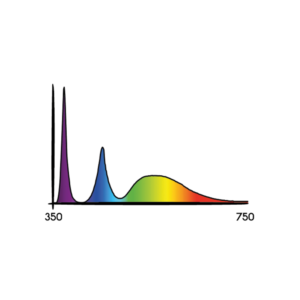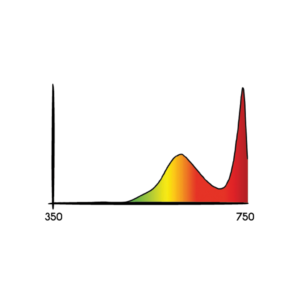SECRET JARDIN LIGHTING PRODUCTS
Secret Jardin offers three lighting technologies.
COSMORROW : The Cosmorrow range consists of 24V LED bulbs and separate power supplies. This patented technology allows the Cosmorrow LED bulb to be compact, indestructible, water-proof, durable and safe. The Cosmorrow LED is available in four categories:
- The Cosmorrow Kits Full Spectrum simulate the summer sun: Particularly suitable for flowering and fruiting.
- The TNoled Kits Grow Spectrum, simulate the spring sun: conducive to the growth of your plants.
- The Cosmorrow IR and UV in supplementary, signage and curative lighting.
- The bulbs and power supplies are sold individually.
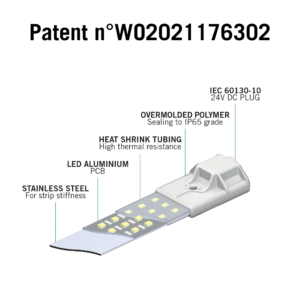
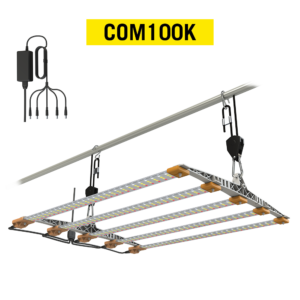
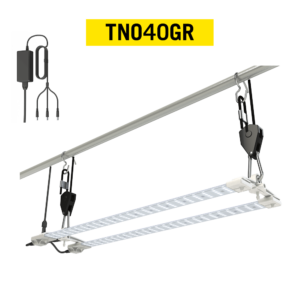
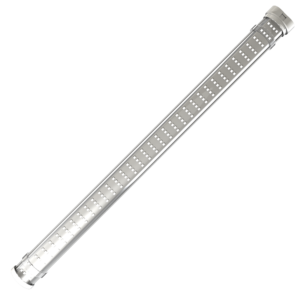 TLED : LED bar for small spaces, the TLED plugs directly into the mains. It comes in two wattages, 26 and 42 watts, and two colors, spring and summer. It can clip/fix vertically as well as horizontally to any tubular structure from ⌀16 to ⌀25 mm – ⌀0.63″ to ⌀1.00″. It is an all-in-one, compact and durable product that you will keep for a long time.
TLED : LED bar for small spaces, the TLED plugs directly into the mains. It comes in two wattages, 26 and 42 watts, and two colors, spring and summer. It can clip/fix vertically as well as horizontally to any tubular structure from ⌀16 to ⌀25 mm – ⌀0.63″ to ⌀1.00″. It is an all-in-one, compact and durable product that you will keep for a long time.
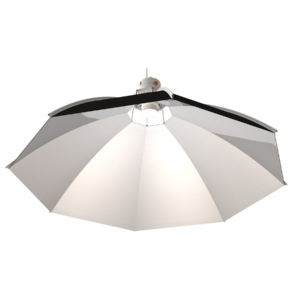 DAISY : Vertical reflector for HPS, MH, CFL and LED lamps, Daisy provides up to 40% more photons than conventional reflectors, with, above all, a much better light distribution. It includes a thermal cutout for safety and comes in four sizes to fit any space.
DAISY : Vertical reflector for HPS, MH, CFL and LED lamps, Daisy provides up to 40% more photons than conventional reflectors, with, above all, a much better light distribution. It includes a thermal cutout for safety and comes in four sizes to fit any space.
THE PROPOSED COLORS
For photosynthesis, our lights are available in two main colors:
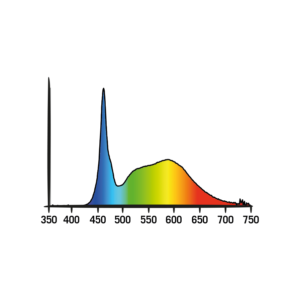
GROW SPECTRUM or 6500°K : Corresponds to the spring sun with more blue than red. It is particularly dedicated to the growth of leaves.
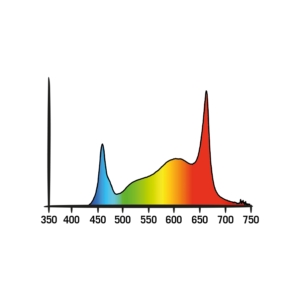 FULL SPECTRUM or BLOOM : Corresponds to the summer sun, with more red than blue. It is particularly dedicated to the flowering and fruiting of plants, but will also be suitable for growth thanks to its blue part which remains important.
FULL SPECTRUM or BLOOM : Corresponds to the summer sun, with more red than blue. It is particularly dedicated to the flowering and fruiting of plants, but will also be suitable for growth thanks to its blue part which remains important.
On some lights, we add non visible colors, which do not act on photosynthesis, but have their uses:
NEAR ULTRA-VIOLET (UV) : Strengthen the immune system, fight mildew, and shorten internodes (stockier plants)…
NEAR INFRA-RED (IR) : Trigger flowering and fruiting, warm your plants, and lengthen internodes (taller plants).
THE LIGHTING LEVELS
In order to evaluate the “power of a light in a cultivation system”, we measure the number of photons in the visible range (photons that contribute to photosynthesis), received per m2 and per second, on the cultivation surface. This results in a graph of the size of the cultivation surface, on which we can read the levels of PPFD (Photosynthetic Photon Flux Density) measured every 15 cm. In order to remain neutral, we use a transparent background to perform these measurements.
In nature, at 45° latitudes, the average PPFD during the day is:
- Winter: 170 μmol/s/m2
- Spring: 400 μmol/s/m2
- Summer: 750 μmol/s/m2
We therefore use three types of color to differentiate the levels of lighting:
- Level I : 0-300 μmol/s/m2 : Propagation, vegetative stage, early growth
- Level II : 300-600 μmol/s/m2 : Growth
- Level III : Plus de 600 μmol/s/m2 : Intensive growth
THE EFFICIENCY OF YOUR LIGHTING
Once you have the right color and level, you must now check its consumption. This is done by measuring in a lab the total number of visible photons your light will emit each second (The PPF for Photosynthetic Photon Flux) and dividing it by the number of watts your light will consume, in watts. This will give the PPE (Photosynthetic Photon Efficacy), in μmol/s/w or μmol/joule.
To help you find your way around, here are some typical PPE values:
- Fluorescent: CFL, TCL, T8, T5 : Up to 1 μmol/j
- Discharge lamps: HPS, MH, CMH : Up to 2 μmol/j
- Light-emitting diodes: LED : Up to 3 μmol/j
For example, our Cosmorrow COP40FS, at EPP of 2.85 μmol/d, will consume one third less than a discharge lamp (HPS, MH, CMH…) and two thirds less than a Compact Fluo lamp (CFL, TCL, T5, T8…) for the same number of emitted photons.

